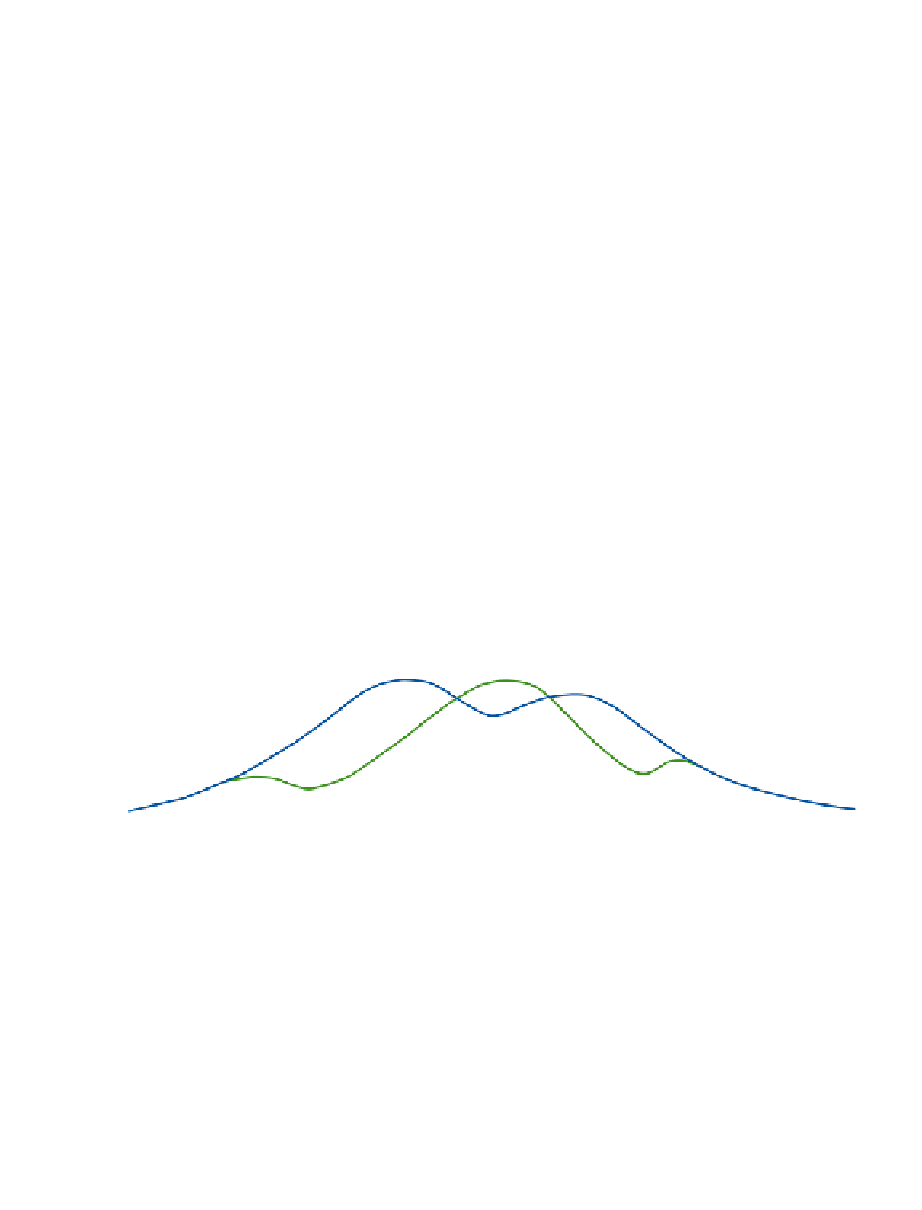Geoscience Reference
In-Depth Information
the high pressure areas. The oceanic subtropical
highs are evaporation sources; divergence over
land may reflect underground water supply or
may be artifacts of sparse data.
4.6
) and stronger Trade Winds in the cold season
of the Southern Hemisphere.
Evaporation requires an energy source at a
surface that is supplied with moisture; the vapor
pressure in the air must be below the saturated
value (
es
); and air motion removes the moisture
transferred into the surface layer of air. As
illustrated in
Figure 2.16
, the saturation vapor
pressure increases with temperature. The change
in state from liquid to vapor requires energy to be
expended in overcoming the intermolecular
attractions of the water particles. This energy is
often acquired by the removal of heat from the
immediate surroundings, causing an apparent
heat loss (
latent heat
), as discussed on p. 72, and
a consequent drop in temperature. The latent heat
of vaporization needed to evaporate 1kg of water
at 0
C EVAPORATION
Evaporation (including transpiration from plants)
provides the moisture input into the atmosphere;
the oceans provide 87 percent and the continents
13 percent.
The highest annual values (1500mm), averaged
zonally around the globe, occur over the tropical
oceans, associated with Trade Wind belts, and
over equatorial land areas in response to high solar
radiation receipts and luxuriant vegetation growth
(
Figure 4.5A
). The larger oceanic evaporative
losses in winter, for each hemisphere (
Figure
4.5B
), represent the effect of outflows of cold
continental air over warm ocean currents in the
western North Pacific and North Atlantic (
Figure
10
6
J. Conversely, condensation
releases this heat, and the temperature of an air
mass in which condensation is occurring is
increased as the water vapor reverts to the liquid
°
C is 2.5
×
2000
(A)
Land/ocean
1500
1000
500
0
2000
(B)
Seasonal ocean
1500
1000
500
0
90°N
60°N
30°N
0°
30°S
60°S
90°S
Figure 4.5
Zonal distribution of mean evaporation (mm/year). A: Annually for the ocean and land surfaces; B: Over
the oceans for December to February and June to August.
Sources: After Peixoto and Oort (1983), Fig 22. Copyright (c) D. Reidel, Dordrecht, by kind permission of Kluwer Academic Publishers.
Also partly from Sellers (1965).





















































